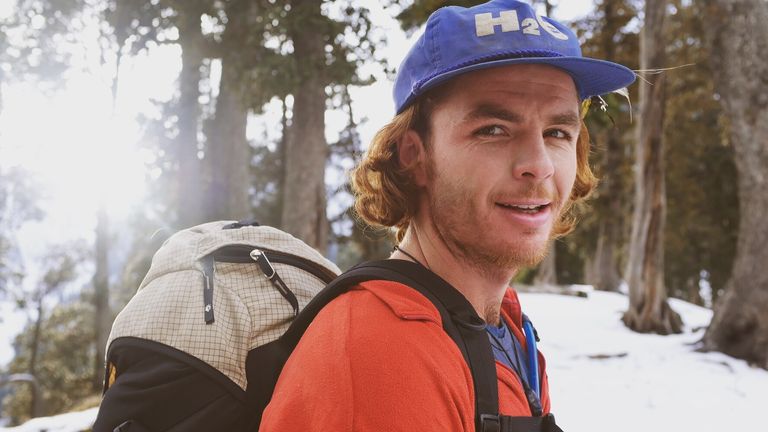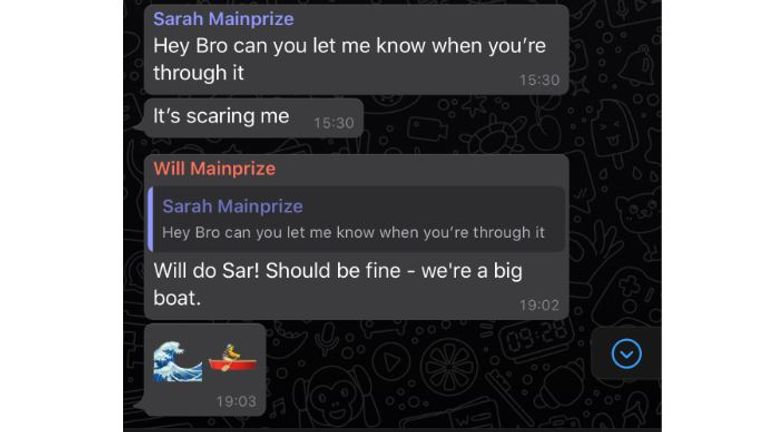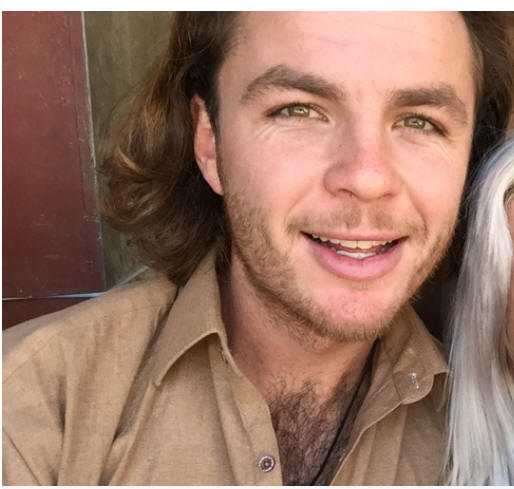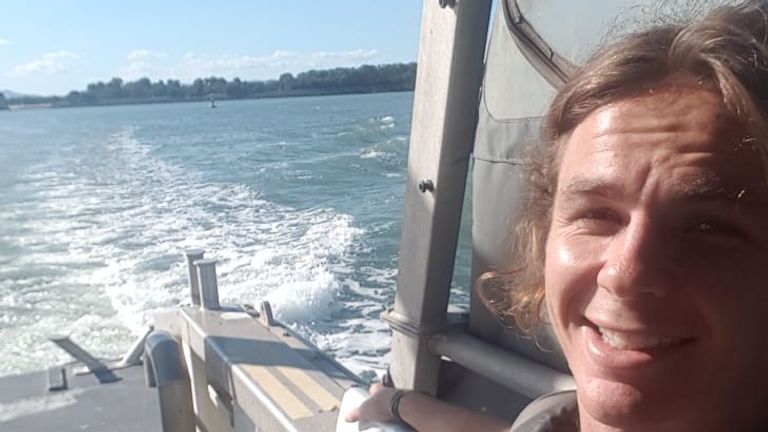




Will Mainprize, 27, said he would tell his family when he had passed the typhoon and expressed fear about the leaking ship.
Saturday 12 September 2020 Sky News
The sister of one of 40 men missing at sea near Japan has begged authorities to resume their search, saying she believes her brother is alive eight days after his cargo ship capsized in a typhoon.
William Mainprize, a 27-year-old Australian, was a senior stockman on board the football field-sized ship along with 42 others and 6,000 cattle when it is believed to have sunk off the coast of Amami Oshima island in southwestern Japan.
His sister, Emily Hastings, described Mr Mainprize as "the most warm-hearted person you'll meet".
"For him to not be contributing to the world, to stop having his mark on it would be a serious tragedy, so we are just really hoping that won't be the case and we are going to do everything we can to get the search and rescue back up," she said.
Two survivors and one body have been found since the Gulf Livestock 1 ship capsized in 125mph winds. Having found no one since last Friday, the Japanese coastguard stopped its search on Wednesday.
Sky News has seen Mr Mainprize's last WhatsApp messages sent to his family, in which he sought to ease their concern about the approaching typhoon.
The last message was a response to his sister Sarah asking him to tell them when he "got through it," saying "it's scaring me".
He replied: "Will do Sar."
"Should be fine! We're a big boat," he added, before sending a message with the emoji of a wave and boat.
Ms Hastings said the family WhatsApp group is very active so they "got really scared" when he went offline.
"He had also messaged friends saying that the boat was floating sideways and taking in water and that he was really frightened," she said.
It's believed that around this time, the typhoon swept over the ship, which put out a distress call. The rescued crewmen said the engine cut out and a huge wave hit, causing the vessel to capsize and sink.
Given the two survivors said they were the last names to be called to the control room after the distress call, Ms Hastings said she has "reason to believe that with life boats and the time Will had to prepare, that he and many others really could still be out there".
"The survivors shared that they had life jackets on, and this was after the distress call, so they would've been ready to use life boats at that stage."
She added that Mr Mainprize was a "survivalist," who was on the ship to look after the cattle but in his usual job led rescues and adventure trips in the Australian outback.
"If he is out there he would be caring for the safety of others," she said.
"He is just so kind and compassionate. This beautiful, young 27-year-old man. I'm 18 months older than him and we were like twins growing up. If you spend time with him you feel like a better person."
A petition calling for the search to resume, which was started by the family of a 25-year-old New Zealand man who is also missing, has gained more than 8,000 signatures.
Ms Hastings said this support is "really sustaining" but that her family's focus was to make the authorities act.
"All the support is really sustaining at the moment," she said. "Our true goal is to cause action for the search and rescue. There are resources available to add to this. We're just hoping that this causes action.
"We know the search was suspended due to weather but as far as I'm aware it's calm again so we would hope that the Japanese coastguard start their search back up."
"This is a time sensitive issue and there are things that can and must be done. There is nothing to suggest they're not still out there."
Rescuers found an empty overturned orange lifeboat floating at sea, with no sign as to whether anyone had been on board, as well as a life jacket and cattle carcasses near where the ship is believed to have sunk.
The discovery of several items on islands near where live export ship Gulf Livestock I sank last month has given the family and friends of Will Mainprize fresh hopes.
DISCOVERIES on uninhabited islands near Japan have given fresh hope for the 40 missing crewmen from export ship Gulf Livestock I, which sank in heavy seas last month.
But funding for the community driven rescue mission is fast drying up and family and friends of the missing men are pleading for donations to complete stages three and four of the effort.
There were 43 crew members and almost 6000 cattle on-board the live export ship when it sank during typhoon Maysak off the coast of Japan on September 2.
Three Filipino men were pulled from the water by the Japanese Coast Guard in the days following the ship’s distress beacon, but one died.
The Coast Guard scaled back the search and rescue response to its “usual patrol arrangements” on September 9.
New South Wales stockman Will Mainprize and Queensland vet Lukas Orda are among the 36 Filipinos, two New Zealanders and two Australians still lost at sea.
The two surviving Filipino men have testified that they witnessed the deployment of four life rafts before the ship sank and confirmed every crew member had put on a PFD.
The canopy of a life raft, buoys, life rings, a blue boot, dead cows and other debris have been filmed and photographed washed up on islands in the Tokara group in the East China Sea by Tasmanian cinematographer, Simon Wearne.
The past president of the Tasmanian branch of the Australian Cinematographer’s Society, now living in Japan, spotted the debris on two of seven community funded reconnaissance flights.
He has been heavily involved in co-ordinating the community rescue effort and communications in Japan.
The helicopters and fixed wing flights have surveilled areas of highest probability for survival based on expertise, local knowledge and including current and drift modelling.
Close friend and former housemate and colleague of Mr Mainprize, Harry Morrison, from Nile in Tasmania’s North, said the discoveries meant there was still hope.
Mr Morrison has helped lead the effort and started the GoFundMe crowdsourcing page, Save the Forty of Gulf Livestock 1, which has raised almost $140,000.
“If a [crew member] drowns with a life jacket on they won’t sink, they will float,” he said.
“So until they find those life jackets or those four life rafts, we can’t stop searching.”
Mr Morrison said $15,000 was needed to complete phase three of the operation – the aerial search of the four islands closest to Amami island, nearest to where the ship went down.
Phase four would see the aerial search shift north to ocean just south of Tokyo costing a further $25,000.
The rescue mission led by the family and friends of Mr Mainprize has spent $144,700 on flights around the islands.
It also received two private donations of $25,000 and the New Zealand based effort has received about $100,000 worth of satellite imagery from Maxar Technologies.
Mr Morrison said they would soon receive a $75,000 bill for flights.
“We’ve exhausted all of our immediate contacts and groups,” he said.
“It’s so bizarre that no one, particularly Australia, New Zealand or the Philippines [governments] are doing anything to do with the search.
“There are so many people out there that are not accounted for and there’s no answer for families or loved ones.”